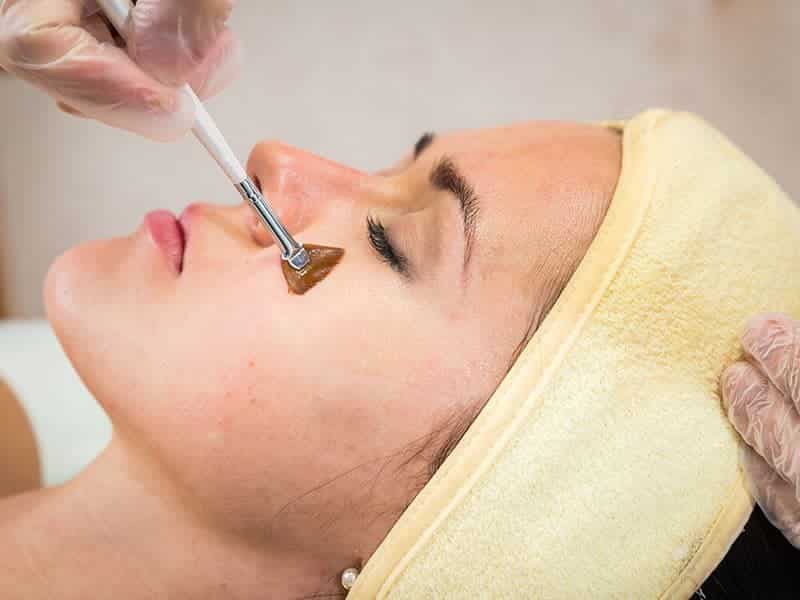Chemical peels have gained popularity as a non-invasive cosmetic treatment for various skin concerns. From acne scars to sun damage, these treatments can revitalize your skin’s appearance. In this article, we will explore what chemical peels are, their benefits, types, procedure, and the factors influencing the Chemical Peels Cost in Dubai.
What Are Chemical Peels?
Chemical peels are dermatological procedures that involve applying a solution to the skin to exfoliate its outer layers. The solution causes the skin to slough off, allowing new, healthier skin to emerge. This treatment can improve skin texture, tone, and overall appearance.
Types of Chemical Peels
There are three main types of chemical peels, categorized based on their depth of penetration into the skin:
1. Superficial Peels
Superficial peels are the mildest type and typically use alpha hydroxy acids (AHAs) or beta hydroxy acids (BHAs). They target the outermost layer of skin, making them suitable for individuals seeking to improve skin texture and tone. Superficial peels can help with:
- Minor sun damage
- Mild acne
- Fine lines
2. Medium Peels
Medium peels penetrate deeper into the skin, usually utilizing trichloroacetic acid (TCA). This type of peel is effective for treating:
- Moderate sun damage
- Acne scars
- Uneven skin tone
Medium peels often require some downtime for recovery, as they can cause redness and peeling for several days.
3. Deep Peels
Deep peels penetrate the dermis, providing more dramatic results. Phenol is commonly used for this type of peel, making it suitable for severe skin issues such as deep wrinkles, significant sun damage, and extensive scarring. However, deep peels involve longer recovery times and can have more pronounced side effects.
Benefits of Chemical Peels
Chemical peels offer numerous benefits for various skin types and concerns:
1. Improves Skin Texture
By removing the outer layer of dead skin cells, chemical peels promote smoother skin texture, reducing roughness and uneven patches.
2. Reduces Fine Lines and Wrinkles
Chemical peels can stimulate collagen production, helping to minimize the appearance of fine lines and wrinkles over time.
3. Treats Acne and Scarring
Chemical peels are effective in treating active acne and improving the appearance of acne scars, resulting in clearer, healthier skin.
4. Evens Skin Tone
By targeting hyperpigmentation and sun spots, chemical peels can help even out skin tone, providing a more uniform appearance.
5. Enhances Radiance
After a chemical peel, many patients report a renewed glow in their skin, making it look fresher and healthier.
The Chemical Peel Procedure
The procedure for chemical peels generally involves the following steps:
1. Consultation
Before the treatment, a consultation with a qualified dermatologist or licensed esthetician is essential. They will assess your skin type, discuss your goals, and recommend the appropriate type of peel.
2. Preparation
On the day of the procedure, the skin will be cleansed to remove any makeup, oils, or impurities. A skin prep solution may also be applied to enhance the peel's effectiveness.
3. Application of the Chemical Solution
The chemical solution is applied evenly to the treatment area. The duration of application varies depending on the type of peel. You may feel a tingling or burning sensation during this process.
4. Neutralization and Aftercare
After the desired time, the solution is neutralized, if necessary. Post-peel care is crucial, including applying soothing creams and sunscreen to protect the skin during the healing process.
Recovery and Aftercare
The recovery period depends on the type of chemical peel:
- Superficial Peels: Minimal downtime, with mild redness and peeling lasting a few days.
- Medium Peels: More significant peeling and redness for up to a week.
- Deep Peels: Extended recovery period, often involving several weeks of redness and sensitivity.
During recovery, it’s essential to follow aftercare instructions, including:
- Keeping the skin moisturized
- Avoiding sun exposure
- Using gentle cleansers and products
Chemical Peels Cost in Dubai
One of the most common considerations for individuals seeking chemical peels is the cost. The chemical peels cost in Dubai can range from AED 499 to AED 999, depending on several factors:
1. Type of Peel
As mentioned, superficial peels are generally less expensive than medium or deep peels. The more complex the procedure, the higher the cost.
2. Clinic Reputation
Established clinics with experienced dermatologists may charge more due to their reputation and expertise.
3. Location
The cost may vary based on the clinic’s location within Dubai. High-end areas may have higher pricing due to increased demand and operational costs.
4. Additional Treatments
Sometimes, chemical peels are combined with other treatments, such as facials or laser therapy, which can increase the overall cost.
Frequently Asked Questions
1. Are Chemical Peels Safe?
Yes, when performed by a qualified professional, chemical peels are generally safe. However, individuals with certain skin conditions or sensitivities should discuss their options with a dermatologist.
2. How Often Should I Get a Chemical Peel?
The frequency of chemical peels depends on the type of peel and individual skin goals. Superficial peels can be done monthly, while medium or deep peels are typically spaced out by several months.
3. Can I Combine Chemical Peels with Other Treatments?
Yes, many patients opt to combine chemical peels with other treatments for enhanced results. Always consult with a dermatologist to create a tailored treatment plan.
Conclusion
Chemical peels can be a transformative treatment for various skin concerns, helping to enhance your skin's texture, tone, and overall appearance. Understanding the types of peels, their benefits, and the chemical peels cost in Dubai is essential for making informed decisions. Whether you're dealing with acne scars or sun damage, a chemical peel might be the right solution to achieve the radiant skin you desire. Always consult with a qualified professional to determine the best approach for your skin type and needs.





Comments